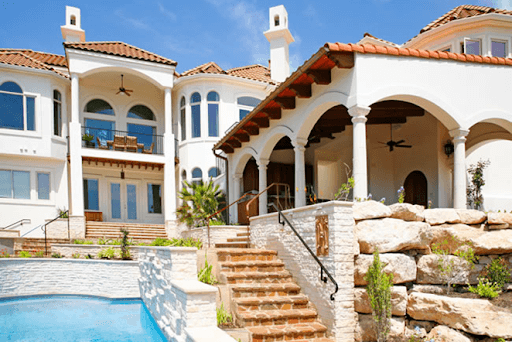
Ready to Tackle Your Custom Home Addition?
If you’ve ever thought about adding more space or a new room onto your existing home, you’re not alone. Plenty of homeowners choose this route over the hassle and expense of moving to a new home. But it still involves construction, which means you need to understand any possible restrictions, costs and design issues before tackling it head on.
Budgeting for Your Custom Home Addition
If you know you want to create more space in your home and you’re not permanently tied to having it built onto the first or second floor of your home, there are a couple of ways you can decrease your build costs by 25 to 50%. Adding a room within the existing footprint of your home is one of the easiest ways to do this, since it utilizes the structure and materials that are already present. This could be easily achieved by turning an attic, basement or garage into a new bedroom, library, den or game room. Another option would be to build a new room outside of your home—for example, a standalone “she-shed,” “man-cave,” home office or even guest quarters in the backyard.
Alternatively, if it’s more of a connection with nature that you’re craving, you’re in luck. Because a sunroom is primarily made up of windows, it costs less to build than a brick-and-mortar structure, and can save an average of $10,000 when compared to the cost of building a new family room addition.
Know the Potential Building Restrictions
It’s important to check your local zoning laws to ensure you have the necessary amount of space on your property to accommodate the addition. Every municipality will have its own requirements, height limits and floor area ratios that limit the size, height and location of your build, but the restrictions vary from neighborhood to neighborhood. You’ll need to contact your city and county offices—as well as your local homeowner’s association if applicable—to find out the requirements for your particular area.
If your building plans don’t match the requirements from your neighborhood, you can adapt your plans as necessary or go a different route altogether—for example, by building out instead of up, or using a different space to build your add-on. Whatever you do, make sure your plans are approved as early as possible so that you don’t waste time and money on construction that will have to be removed or redone.
Make Sure It Fits with the Design of Your Home
When you’re building a new home, you’re working with a blank page, and the sky is the limit for your creativity and personal taste. But when you’re adding a custom addition onto an existing home, you want to make sure it blends in with what’s already there. Stylistically, it just looks better—although it’s not just a matter of aesthetics. If you ever plan to sell your home, a mismatched addition could negatively impact your ROI. At the very least, make sure that if the addition doesn’t stay within the exact design style, it still complements it—because Spanish Colonial and modern farmhouse don’t exactly go together like peanut butter and jelly.
Consider the most obvious elements of your home when trying to unify your look. For example, if you live in an old Victorian with boxy rooms and small windows, it makes sense that you’d want to open it up with larger windows and bigger rooms. In this case, echoing a Victorian style in your new addition—with bay, sash and transom windows—would keep things consistent.
If you love your home but feel eager to make some changes, we’re here to help. Here at Mangum Builders, we’ll work with you to match your construction ideas with your unique lifestyle needs and budget to create a new addition to your home that you’ll never want to leave. Contact us today, and let’s get started on a home addition process that’s as smooth and stress-free as possible.

